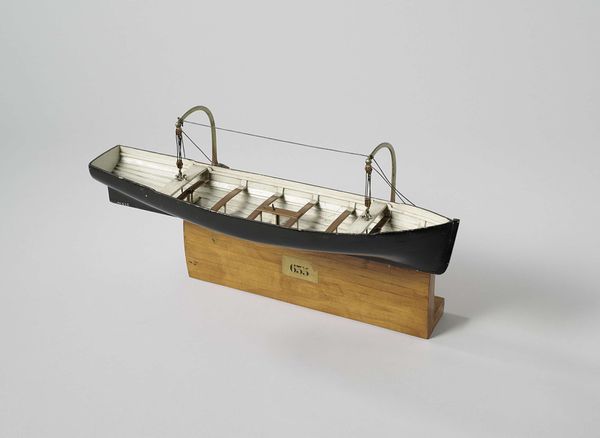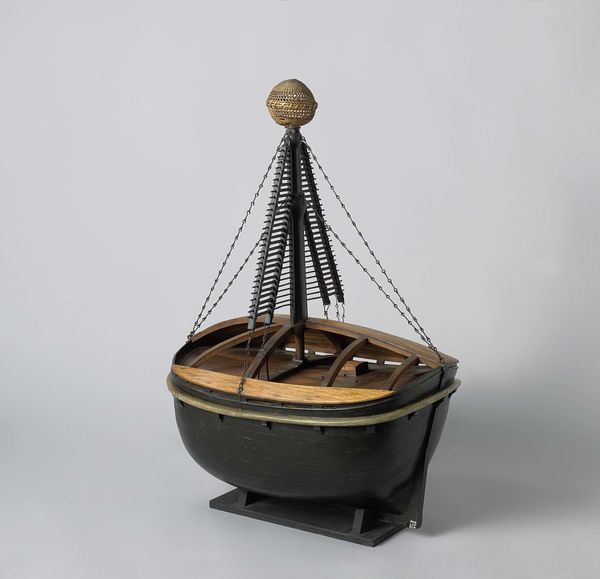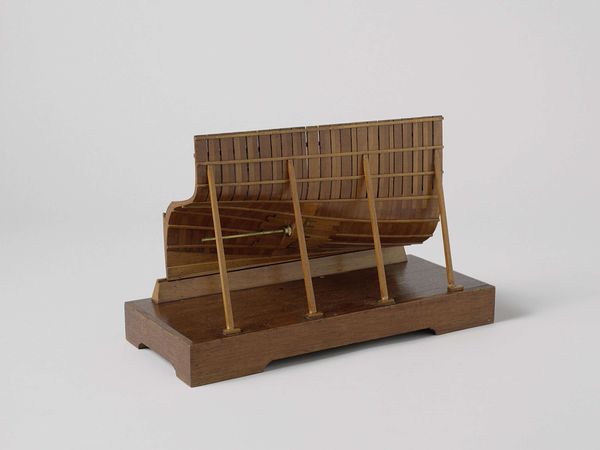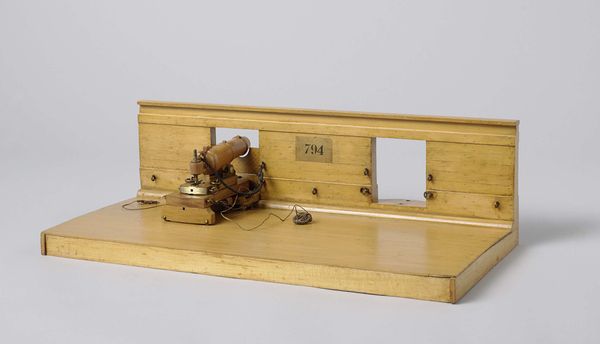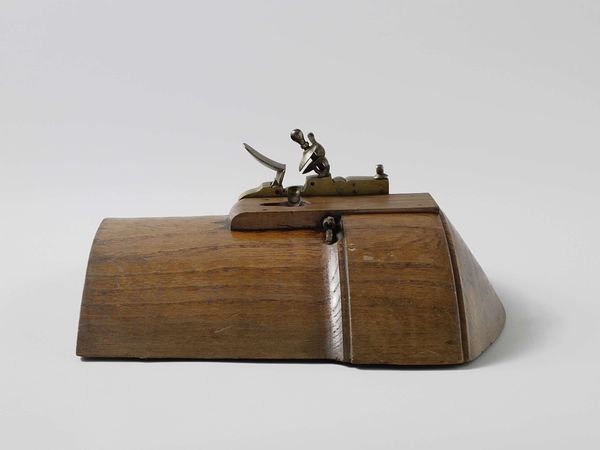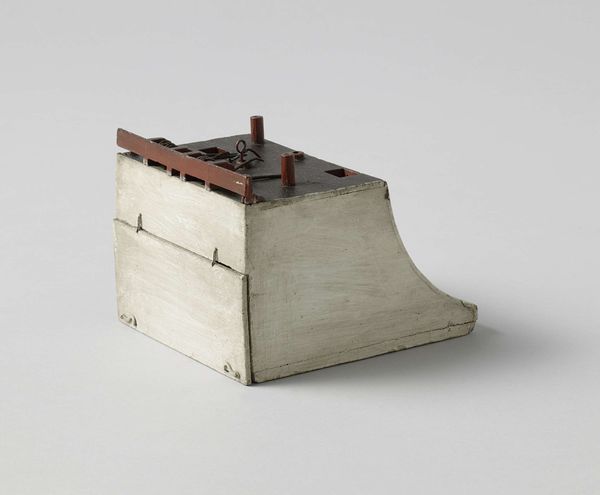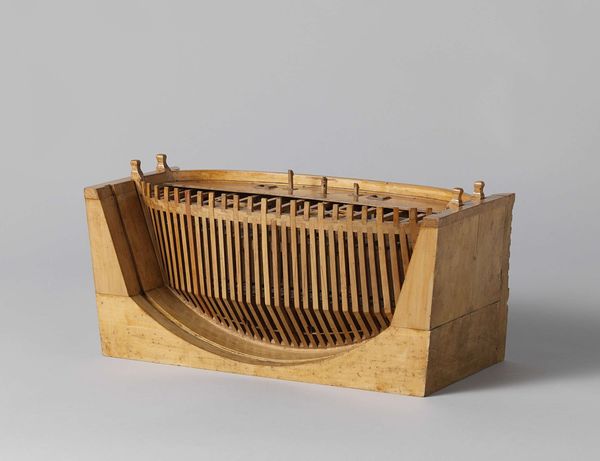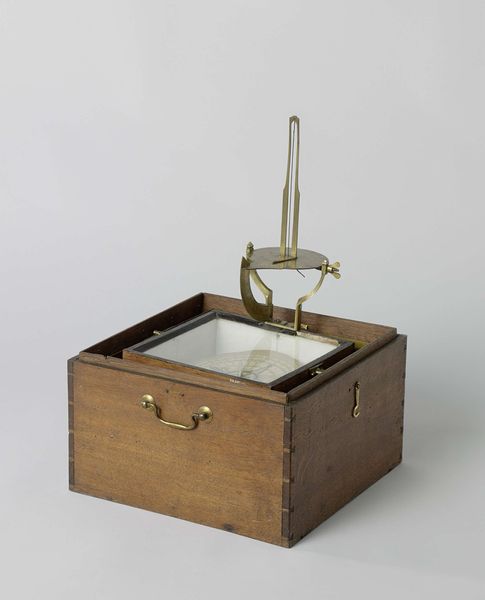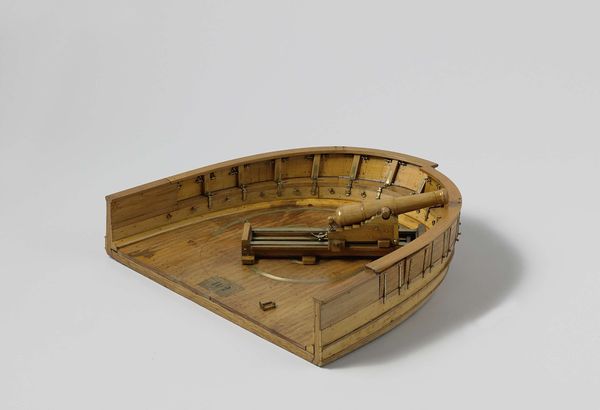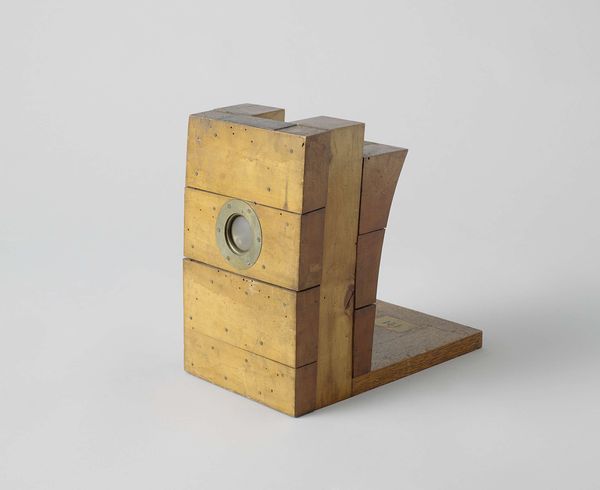
metal, sculpture, wood
#
studio photography
#
metal
#
sculpture
#
wood
Dimensions: total height 37.5 cm, total width 29.9 cm, total depth 15 cm
Copyright: Rijks Museum: Open Domain
Editor: So this is the "Model of a Lifeboat Release," dating back to the late 1850s, probably crafted at Rijkswerf Vlissingen. The use of wood and metal is fascinating. It feels incredibly precise, almost sterile. What kind of societal forces do you think prompted this? Curator: Precisely that, it is precision work. Well, consider the period. This model emerges during a time of intense industrialization and global maritime expansion, making naval engineering a source of national pride. More lives are at sea. The late 1850s witnessed rapid technological advancements, coupled with public anxieties about safety and disaster. Editor: So, this model isn't just about function; it is a display of naval engineering prowess. It serves a particular purpose within the community. Do you think it was made for public viewing? Curator: Potentially. Scale models often served didactic roles – instructing sailors, investors, and the public about technological innovations. Museums were emerging as important sites for this kind of education and spectacle. The model would both communicate information and serve as propaganda. To whom does technology grant safety? Editor: It's interesting how this seemingly simple object carries so much cultural weight. So how does understanding the context affect the piece for you? Curator: Understanding the social context elevates it from a mere technical object to a symbol of societal aspirations and anxieties. The object becomes a focal point for questions about technology, progress, and the public trust in institutions. Editor: That's a completely different way to consider this. Thank you. Curator: The pleasure is all mine, now you know how history impacts art.
Comments
No comments
Be the first to comment and join the conversation on the ultimate creative platform.
